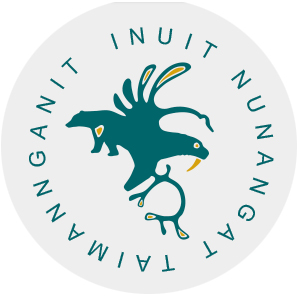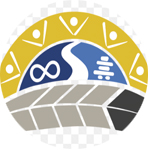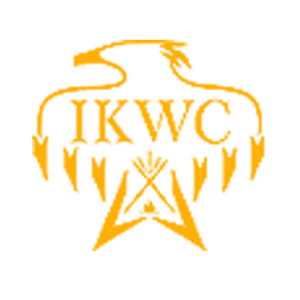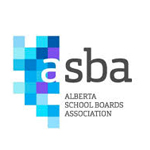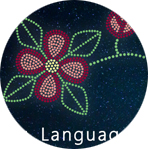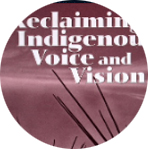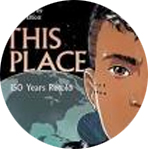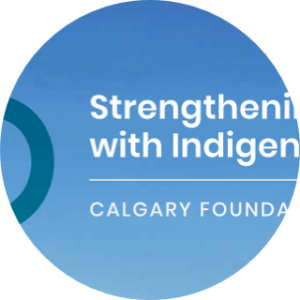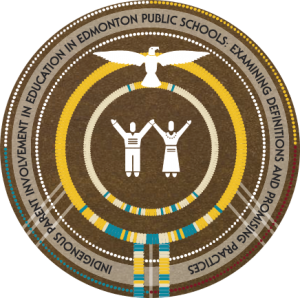Relationship
This section will introduce the importance of relationships within an Indigenous context as well as emphasize the importance of establishing and maintaining relationships with Indigenous Peoples.
Introduction
“Reconciliation is about forging and maintaining respectful relationships. There are no shortcuts.”-Justice Minister Murray Sinclair 1
Making Connections
Making connections and committing space and time for respectful and genuine relationships with Indigenous Elders, leaders, Knowledge Keepers, families, and communities is essential when working towards reconciliation. Through authentic and ongoing relationships, we ensure that Indigenous students have respectful and relevant educational experience and non-Indigenous students have opportunities to learn about and with Indigenous People. Relationships are at the center of meaningful leading, teaching, and learning. ” Learning is a collective activity, not individual, it is built on relationships. It is about the relationship with self, with history, with language, with learning, with family, with community” 2
Making Time and Creating Space
When making the time to connect with First Nation, Métis and Inuit it is important to learn about and respect cultural protocols. Communities have distinct protocols that can be understood through conversations with those in which a relationship is being established. Greater knowledge of protocols follows as relationships are strengthened. A relationship involves working, learning, and growing together. However, relationships are not exclusive to people. Making time within the educational setting includes supporting leaders and educators in building foundational knowledge so they are able to confidently weave knowledge and reconciliation into practice.
Creating space includes establishing and maintaining safe spaces and opportunities that include and welcome Indigenous Peoples within various levels of education, including Indigenous educators, leaders, volunteers, board members, support staff and parents Creating safe and welcoming spaces for Indigenous students is also key to advancing reconciliation, student achievement and engagement.
The concept of relationality applies to and values the interconnection between people and the natural world in which we coexist.
Relationality connects with how we relate to each other and the world around us. The relationship between people, plants, animals, birds, and all elements of nature are interconnected and valued. First Nations, Inuit and Métis Peoples have teachings to describe relationality that have been passed on and practiced.
Relationships within First Nations, Inuit, and Métis contexts have been impacted by aggressive assimilation policies, colonization tactics, and paternalistic attitudes towards Indigenous worldviews that were transmitted through relationships with the land, language, and each other. Family relationships and the ability to communicate were torn apart through tactics such as Residential Schools and other policies and laws forced upon Indigenous Peoples. Policies such as the Indian Act, forced relocation, the Pass System, and the reserve system severed our inherent relationship with the land and each other. Trust was broken in many ways; for example, one-sided interpretations of Treaties and fraudulent land acquisition tactics such as the Métis scrip system benefitted colonizers and took rights and land from Indigenous Peoples. Rebuilding, repairing, and relearning are necessary aspects of relationship building with Indigenous Peoples, and it is important to create opportunities to regain and maintain trust when building relationships with Indigenous Peoples.
Current Practice
The LQS/SLQS have been in effect since September 2019. There are many educational leaders across the province that have and maintain relationships with Indigenous communities, leaders, people, organizations, parents and students. Some examples of relationship building process that educational leaders across the province have enacted are Wisdom Circles, Student Voice Circles, Parent Engagement Events, and Advisory Councils. Please visit the links to learn more about how school districts have established processes to engage and learn with and from Indigenous Peoples in their community. Some examples include the CBE Elder Advisory Council and Wolf Creek Wisdom and Guidance Committee.
Many districts are creating long term positions for Indigenous Educators and support staff to help guide the work, support Professional Development, student learning and parental engagement. Read the “Report On Indigenous Teachers and Leaders in Alberta’s Public School System” to learn more about the critical role and benefit to increasing the representation of Indigenous peoples for all in the provincial school system.
Deepening Relationships
An aspect of deepening relationships with Indigenous Peoples and advance reconciliation includes becoming more deeply aware and acknowledging the experiences that have shaped today’s social contexts. Building foundational knowledge by working and learning with Indigenous Peoples will create understanding and entry points to walk together on the path of reconciliation. The more one learns the more empowered one will be to affect positive change.
This guide is an entry point for learning on some key points of foundational knowledge. Digital resources are one method of developing foundational knowledge. However, that digital learning must be done as a precursor to building respectful, reciprocal relationships with Indigenous Peoples, which are key to authentic learning and making meaningful strides to advance reconciliation.
Murray Sinclair, chair of the Truth and Reconciliation Commission of Canada, gave this advice to each of us, in particular us educators, on the critical role and opportunity that education has to deepen relationships with Indigenous Peoples in order to advance reconciliation in Canada. As you read or listen to TRC Commissioner Senator Murray Sinclair’s words on the pathway forward, reflect on what changes you have made or may need to lead in order to deepen your relationships with Indigenous Peoples. By deepening our relationships with Indigenous Peoples we will restore the balance that Senator Sinclair speaks to. The video TRC Mini Documentary – Senator Murray Sinclair on Reconciliation is transcribed as follows:
Hello, everybody. I’m Murray Sinclair. I’m the chair of the Truth and Reconciliation Commission of Canada. I want to talk to you for a few minutes about the issue of reconciliation, something which, of course, is very important to us, here at the Commission, but also is of interest and importance to a lot of people in Canada. One of the things that we, at the Commission, have discovered is that it took us a long time to get to this point, in terms of the relationship between Aboriginal people in this country. Seven generations of children went through the residential schools. And each of those children who were educated were told that their lives were not as good as the lives of the non-Aboriginal people of this country. They were told that their languages, their cultures, were irrelevant. They were told that their people and their ancestors were heathens and pagans and uncivilized and needed to give up that way of life to come to a different way of living. At the same time that that was going on, non-Aboriginal children in the non-Aboriginal school systems of this country were also being told the same thing about Aboriginal people. So as a result, many generations of children, including you and your parents, have been raised to think about things in a different way, in the wrong way, in a way that is negative when it comes to Aboriginal people. And we need to change that. It was the educational system that has contributed to this problem in this country, and its educational system, we believe, that’s going to help us to get away from this. We need to look at the way that we educate children. We need to look at the way that we educate ourselves. We need to look at what it is that our textbooks say about Aboriginal people. We need to look at what it is that Aboriginal people, themselves, are allowed to say, within the educational system, about their own histories. In addition to that, we also believe that what’s important, when it comes to looking at the way that children are educated, is to understand that because it took us so many generations to get to this point, it’s going to take us at least a few generations to be able to say that we are making progress. We cannot look for quick and easy solutions because there are none. We need to be able to look at this from the perspective of where do we want to be in three or four or five or seven generations from now when we talk about the relationship between Aboriginal and non-Aboriginal people in this country. And if we can agree on what that relationship needs to look like in the future, then what we need to think about is what we can do today that will contribute to that objective. Reconciliation will be about ensuring that everything that we do today is aimed at that high standard of restoring that balance to that relationship. 3
An aspect of deepening relationships with Indigenous Peoples and advancing reconciliation includes becoming more deeply aware and acknowledging the experiences that have shaped past and current social contexts. Building foundational knowledge by working and learning with Indigenous Peoples will create understanding and entry points to walk together on the path of reconciliation. The more one learns the more empowered one will be to affect positive change.
This guide is an entry point for learning on some key points of foundational knowledge. Digital resources are one method of developing foundational knowledge. However, that digital learning can be done alongside of or as a precursor to building respectful, reciprocal relationships with Indigenous Peoples, which are key to authentic learning and making meaningful strides to advance reconciliation.
CASS Gathering Commitment to Action Pledge:
In the spirit of reconciliation with Indigenous Peoples,
I________________________, solemnly pledge to:
- Learn more foundational knowledge ABOUT, WITH AND FROM First Nations Métis and Inuit
- Continue to build respectful relationships with the First Nations, Métis and Inuit WHERE I LIVE, LEARN AND WORK.
- Challenge the myths, stereotypes, and misconceptions about First Nations Métis and Inuit of Canada.
- Encourage and INSPIRE others to participate in reconciliation.
- Read the Truth and Reconciliation Commission of Canada’s 94 CALLS to ACTION.
- Read and HONOUR the United Nations Declaration on the Rights of Indigenous Peoples.
- Read the final report on National Inquiry on Murdered and Missing Indigenous Women and Girls 231 Calls to JUSTICE.
To get a sense of the various terms used in relation to Indigenous Peoples, refer to the IDENTITY SECTION within this guide.
Reflection
1. What actions have you learned that you will undertake in your role to deepen your relationships with Indigenous Peoples?
2. As a system leader, how do/can you lead the development of effective relationships with First Nations, Métis and Inuit parents, guardians, Elders and Knowledge Keepers, local leaders, and community members in support of reconciliation?
3. How does understanding the concept of relationality contribute to you developing relationships with Indigenous Peoples?
4. What do you think the relationship with Indigenous Peoples should look like to restore the balance that Senator Sinclair described?
5. What will you accept as evidence that you’re being successful in building respectful, responsive, responsible and reciprocal relationships with Indigenous students, staff, families and community?
Related Resources
The educational resources you find here are for Indigenous and non-Indigenous educators.
A comprehensive overview of the four regions where Inuit and Inuvialuit reside, history and map
This document gives insight into “What is the protocol to follow when inviting an elder, knowledge keeper or cultural advisor to participate in your meetings or events?”
To build respectful relationships, acknowledging the land is an important part of reconciliation. It honours the authentic history of North America, its original people and tells the story of the creation of this country that has historically been missing.
Provides a repository of information on Treaty No. 6, Treaty No. 7 and Treaty No. 8. Members, and a First Nations directed environment to learn and share information.
Indigenous Canada is a 12-lesson Massive Open Online Course (MOOC) that explores Indigenous histories and contemporary issues in Canada. This online course is s MUST-DO which is presented from an Indigenous perspective as it explores key issues facing Indigenous peoples today from a historical and critical perspective highlighting national and local Indigenous-settler relations.
Rupertsland Centre for Teaching and Learning develops comprehensive foundational knowledge resources, engaging lesson plans, meaningful professional development opportunities and authentic classroom learning tools that speak accurately and meaningfully to topics in Métis education.
Wahkohtowin means “everything is related.” It is one of the basic principles of Cree Natural Law passed through language, song, prayer, and storytelling. The elders explain that by following the teachings of Wahkohtowin individuals, communities and societies are healthier.
Narcisse Blood speaks to the connection of language and worldview from a Blackfoot perspective. The concept of interconnection and relationality are touched upon.
ASBA Indigenous Advisory Circle Elders discuss the sharing of Indigenous culture and the importance of asking questions.
ASBA Indigenous Advisory Circle Elders discuss the various protocols when working with Elders.
The entire inspiring video explains the traditional role of Aboriginal grandparents, the historical significance of family members being severed from one another, and what a grandparent can do to maintain connection to their grandchild. 3:58-5:30 speaks specifically to kinships and relationships.
The spiral is a symbol that helps us understand our interconnected relationship to all beings in the world – animate, inanimate and spiritual. The interconnected nature of the spiral demonstrates how all living beings are in relationship with each other, and have boundaries that define those relationships.
The infographic poster gives succinct visual and key points into “How to get started and who can help within the realm of Truth and Reconciliation in an Education environment.”
This blog was created as a resource for people unfamiliar with specific Indingenous topics
A print and web version of this resource includes contemporary and historical photography, maps and written descriptions on a variety of topics written by Indigenous peoples
This book seeks to clarify postcolonial Indigenous thought beginning at the new millennium. It represents the voices of the first generation of global Indigenous scholars and converges those voices, their analyses, and their dreams of a decolonized world.
Explore the past 150 years through the eyes of Indigenous creators in this groundbreaking graphic novel anthology.
This report outlines how the Calgary Foundation used an outcome harvest process to measure the impact of their actions. This process would lend itself to a school/district planning, implementation and impact study.
Handy practical tips to incorporate into that next meeting with Indigenous
Peoples. For permission to reproduce, please contact Julie Domvile
at julie@ictinc.ca.
Edmonton Public System leaders were interested to learn how to increase the engagement of Indigenous parents/caregivers in their child’s education and how success for Indigenous students should be defined. The inclusion of voices of parents, Elders and students was central to the research findings of what is meant by Indigenous parental engagement and students success, what it looks like, and how it can be realized in school systems.
Calgary Board of Education Protocol Guideline developed to guide to provide guiding principles for the CBE community as it moves forward in the implementation of the CBE Education Plan
Lenape and Potawatami educational scholar Dr. Susan D. Dion introduces the position of the “perfect stranger” in relation to teaching Indigenous content within their classroom.
Footnotes
| 1 | Truth and Reconciliation Commision of Canada. Retrieved from http://www.trc.ca/index-main.html |
| 2 | Makokis, Leona J., Marilyn V. Shirt, Sherri L. Chisan, Anne Y. Mageau, and Dianna M. Steinhauer. mâmawi-nehiyaw iyinikahiwewin. (Blue Quills First Nations College, 2010.) Retrieved from http://www.bluequills.ca/wp-content/uploads/2017/03/BQ_SSHRC_2010_final_report.pdf. |
| 3 | Justice Minister Murray Sinclair. TRC Mini Documentary - Senator Murray Sinclair on Reconciliation Retrieved from https://www.youtube.com/watch?v=wjx2zDvyzsU |


